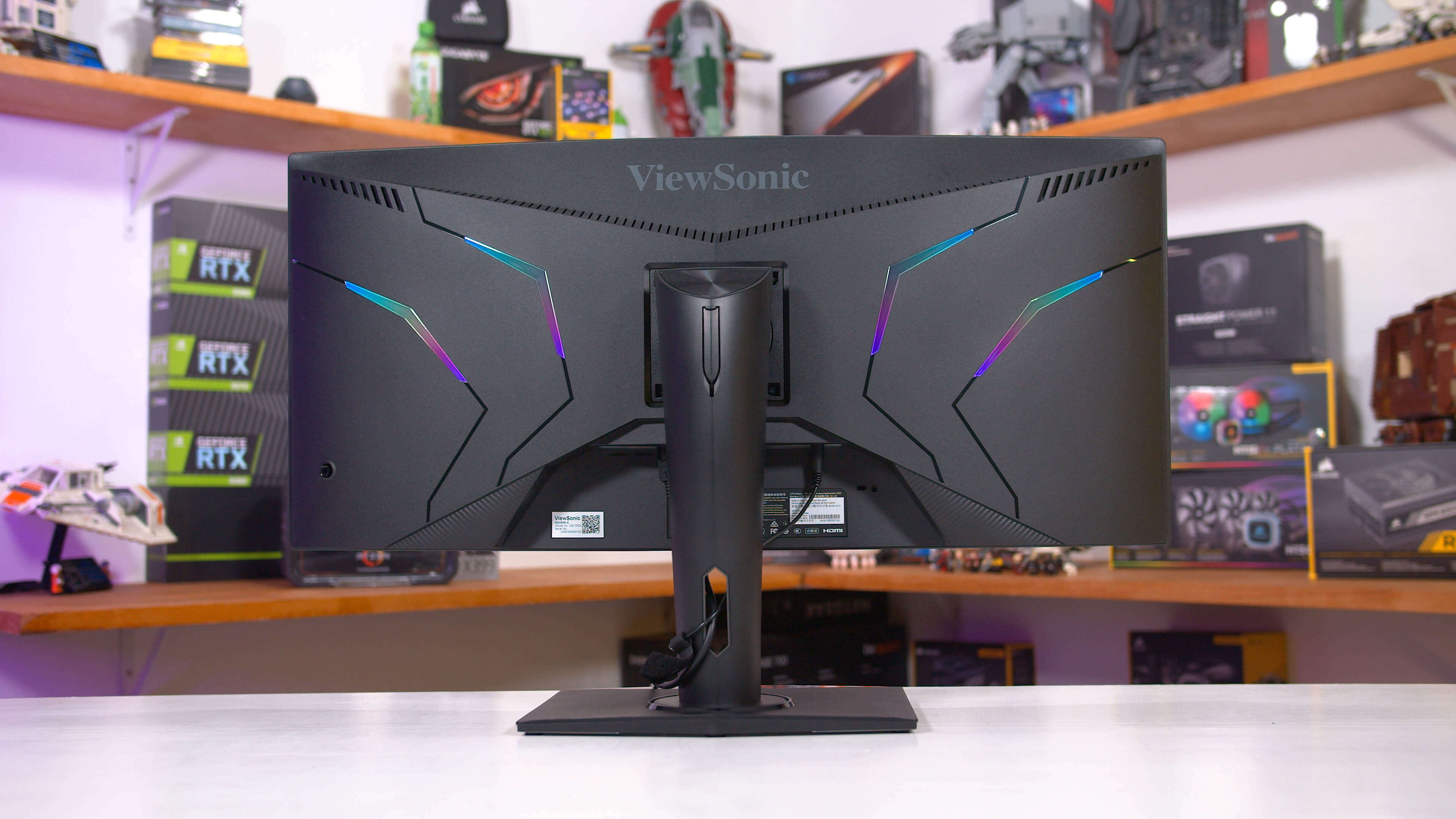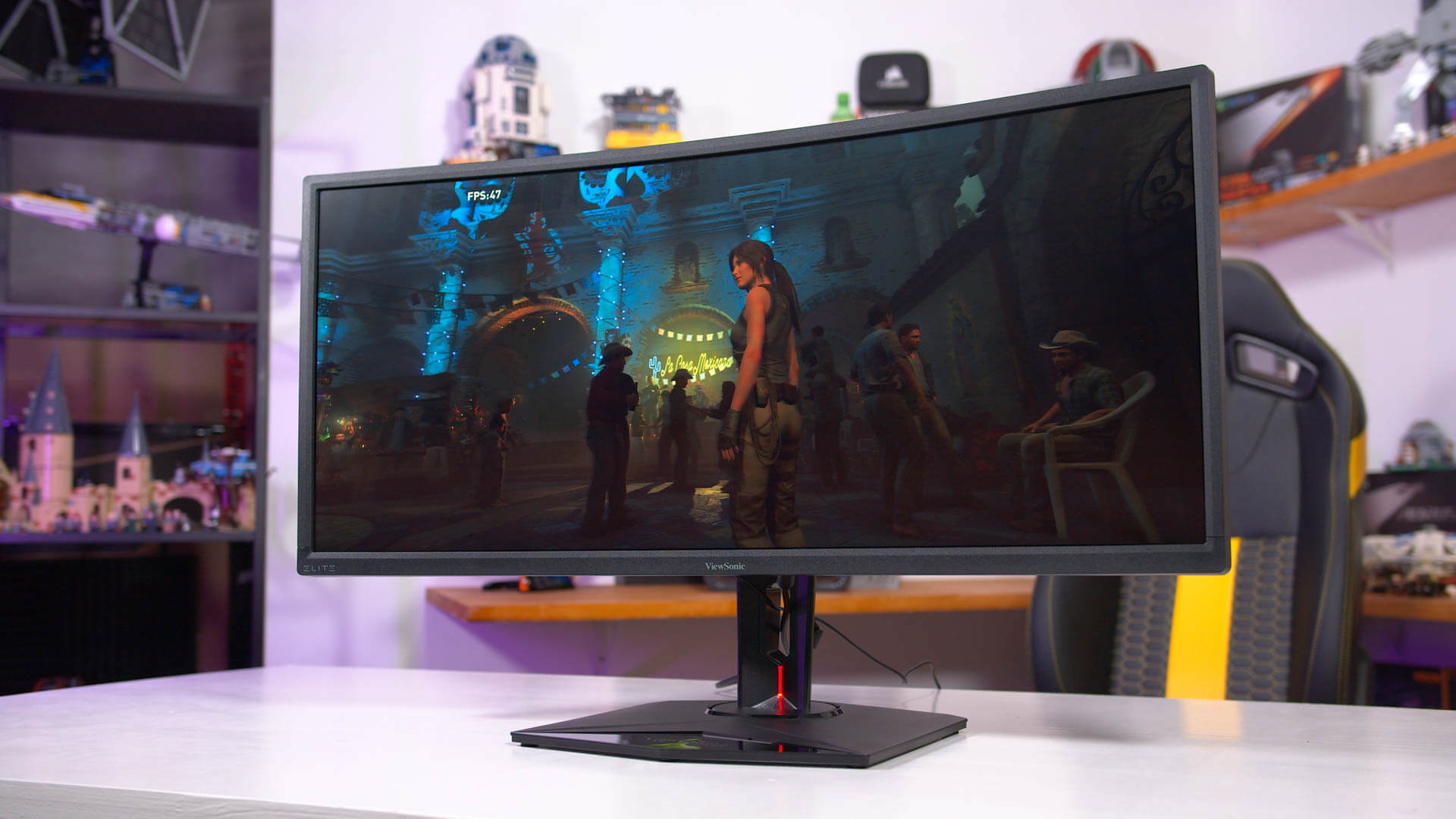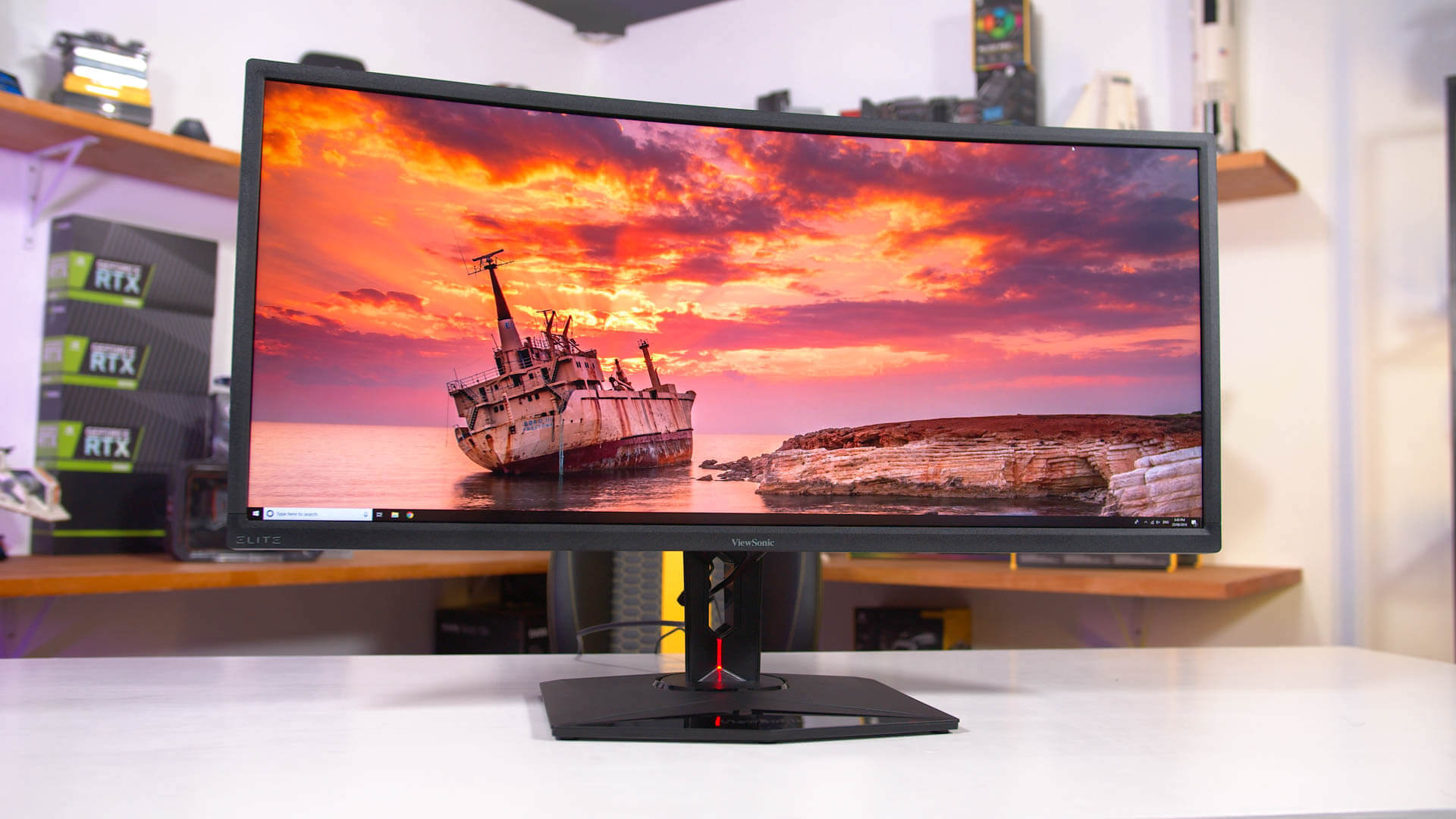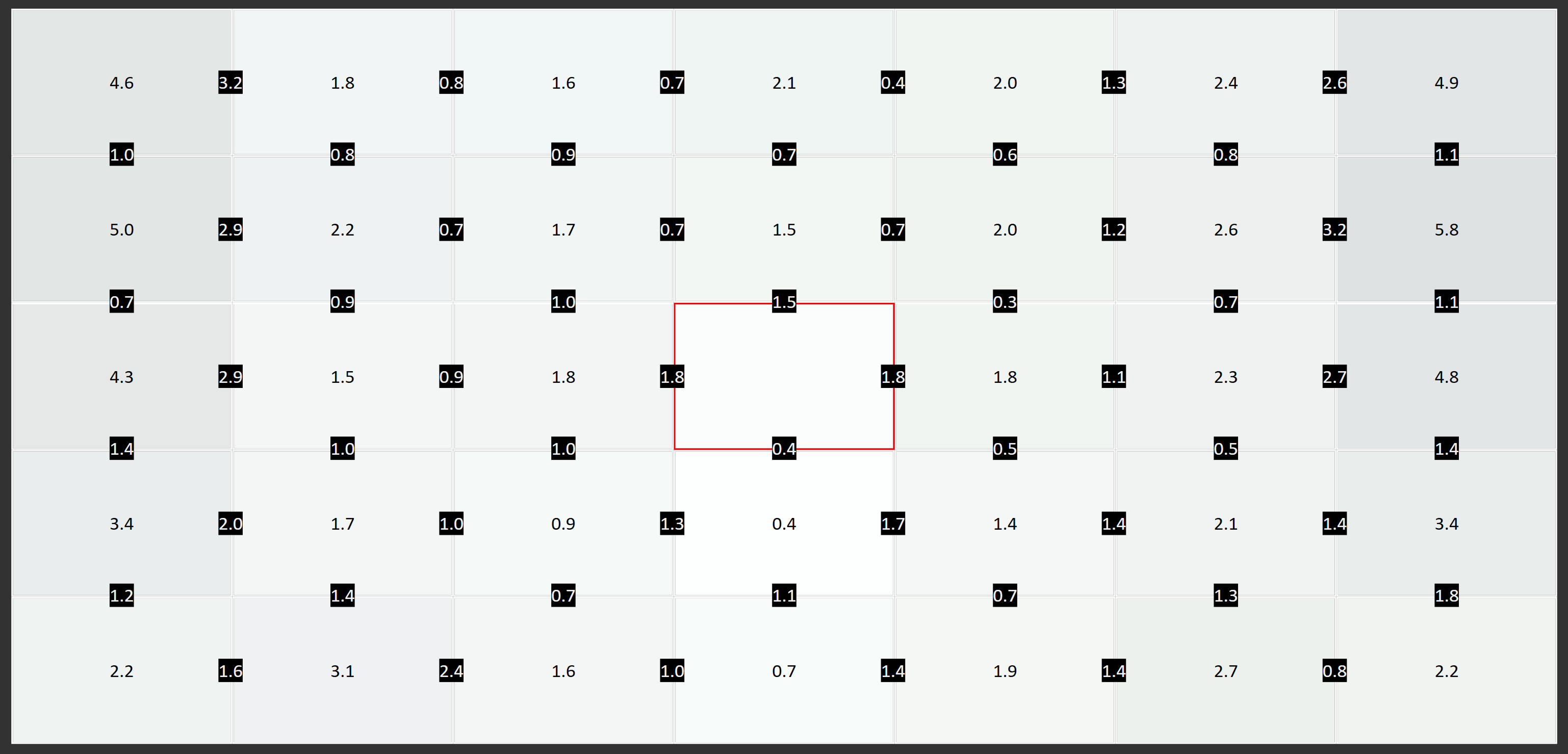The XG350R-C is ViewSonic's latest ultrawide monitor aimed exclusively at the gaming market. A 35-inch 3440 x 1440 MVA display with a maximum refresh rate of 100 Hz, an 1800R curvature and FreeSync. It retails for $700, so it's a little on the premium side, but we'll see how it performs and whether it stacks up to other popular monitors in this category.
ViewSonic has included several gamer features in addition to the specs we just mentioned, including RGB lighting, something ViewSonic calls 'ClearMotion' (backlight strobing), and black stabilization. This is combined with low input lag and basic support for HDR10 content.
Out of the box we noticed the XG350R-C is kind of a chunky monitor, not just in terms of bulk but also the bezels. A lot of monitors are moving to slimmer designs, but it seems ViewSonic hasn't got the message because it's bigger than even the Acer Predator X34 which was released back in 2015.
The base is pretty massive, too, though we know some people prefer these designs to the wide three-pronged stands but this thing really takes up a lot of room on a desk. The good news is this adjustable stand does support swivel, tilt and height adjustability. On more budget offerings it's rare to get height adjustment, so this is a welcome inclusion on an otherwise sturdy construction.
On the rear we're moving into gamer territory with RGB LED lighting and some 'gamer' patterns. This isn't as egregious as, say, an Asus ROG design but it also lacks that sleek and subtle aesthetic that I personally enjoy. There's also LED lighting in the base of the stand which shines towards the front, and a headphone rest that pops out of the stand on the back.
The build quality is rather unimpressive. Not bad, but the heavy use of stock standard black plastic doesn't give the XG350R-C a premium look. When you combine this with the general chunkiness you'd be more inclined to suggest it was a budget display, rather than something priced near $700.
The array of ports is good, two HDMI 2.0, a DisplayPort input, a basic three-port USB hub and a 3.5mm audio output jack. You do get internal speakers for basic audio output.
The on-screen display is both good and bad. We like the inclusion of a directional toggle, but ViewSonic has still somehow made it difficult to navigate by continually switching which buttons perform which actions depending on the area of the menu you are in. A nitpick but we found it annoying enough to mention. The menu's color scheme is difficult to read on certain backgrounds, too, so I often found myself needing to put a white window behind the menu just so I could see what's going on.
We did find some useful features in here. ClearMotion, ViewSonic's brand name for backlight strobing or black frame insertion, provides additional clarity to motion in some gaming environments. I'm personally not a fan as the backlight brightness drops and you can't use it alongside FreeSync, but some people love this sort of feature. There's also a wide variety of game modes, color settings, and so on. I was surprised at the lack of cheat crosshairs though given how ubiquitous that feature is among other brands.
One thing we should mention is our unit shipped with two dead pixels in the far bottom right corner, in close proximity to each other. This does happen from time to time, it's not really something everyone will experience, we were just unlucky with our unit.
Performance
Let's talk refresh rate before we move into other performance metrics. This is a 3440 x 1440 panel at 100 Hz which we think still qualifies as high refresh these days, despite the availability of 144 and even 200 Hz at this resolution. It's a smoother experience than 60 Hz, the step up to 144 Hz is noticeable but we feel for a lot of gamers, especially those who don't have a high-end GPU, this refresh rate is very nice.
The resolution is 1440p-class which is perfect for gaming and productivity tasks, and the 21:9 aspect ratio adds that bit of immersion to your gameplay. As someone that games on an ultrawide I definitely recommend it. ViewSonic is providing adaptive sync with low framerate compensation, which is a must. It works perfectly on AMD and Nvidia GPUs and certainly no issues with flickering.

1440p ultrawide high refresh monitors have matured a lot in recent years to the point where even VA offerings have decent refresh rates, in contrast to some non-ultrawide displays with similar specs. Using the Ultra Fast overdrive setting, we recorded a grey to grey average response time of 5.13ms, which as you can see is one of the fastest VA response time averages we've measured. Typically for a 16:9 monitor these panels sit around 7-9ms but for some reason these ultrawides are just a lot faster.
The XG350R-C is around 0.7ms faster than the 34-inch VA equivalent of this panel you see in budget offerings like Kogan's 34-inch ultrawide. The difference being 34-inch panels are manufactured by Samsung, whereas AU Optronics makes the 35-inch models. This ViewSonic monitor is also a little faster than the best LG IPS panels have to offer with this resolution, as seen in the LG 34GK950F and its 6.1ms transition time. Still, there's a bit of a cluster in that 5-6ms bracket with not much difference between each option.

In terms of input lag, another decent result for the XG350R-C with under 4ms of latency, which is within the usual bracket of gaming monitors. The LG 34GK950F is the fastest ultrawide we've tested at 2.4ms of latency but we're talking about a minor 1ms difference here.

Brightness is good, 330 nits out of the box is going to be too bright for most users, and without any real HDR support there's nothing to be concerned about. The contrast ratio, however, is a weak spot for AU Optronics' ultrawide panel: it sits at just 1900:1 for the XG350R-C, compared to around 3000:1 for monitors that use Samsung's.
The XG350R-C is a standard gamut monitor that focuses on sRGB, in my testing it exceeds the sRGB spectrum slightly but not by enough to be DCI-P3 compliant. Not that this matters, sRGB is most important for PC usage today whether that's gaming or application use.
Color Reproduction
This monitor is surprisingly decent in terms of its calibration. A white point of 6554K is excellent, and if it weren't for a bit of inaccuracy in the darker area of the gamma curve, we'd be looking at a sub 2.0 deltaE average. When viewing saturation performance, we do hit that sub-2.0 deltaE average which is great and helped massively by the accurate white point. And then we also get a better than average result when viewing ColorChecker numbers.


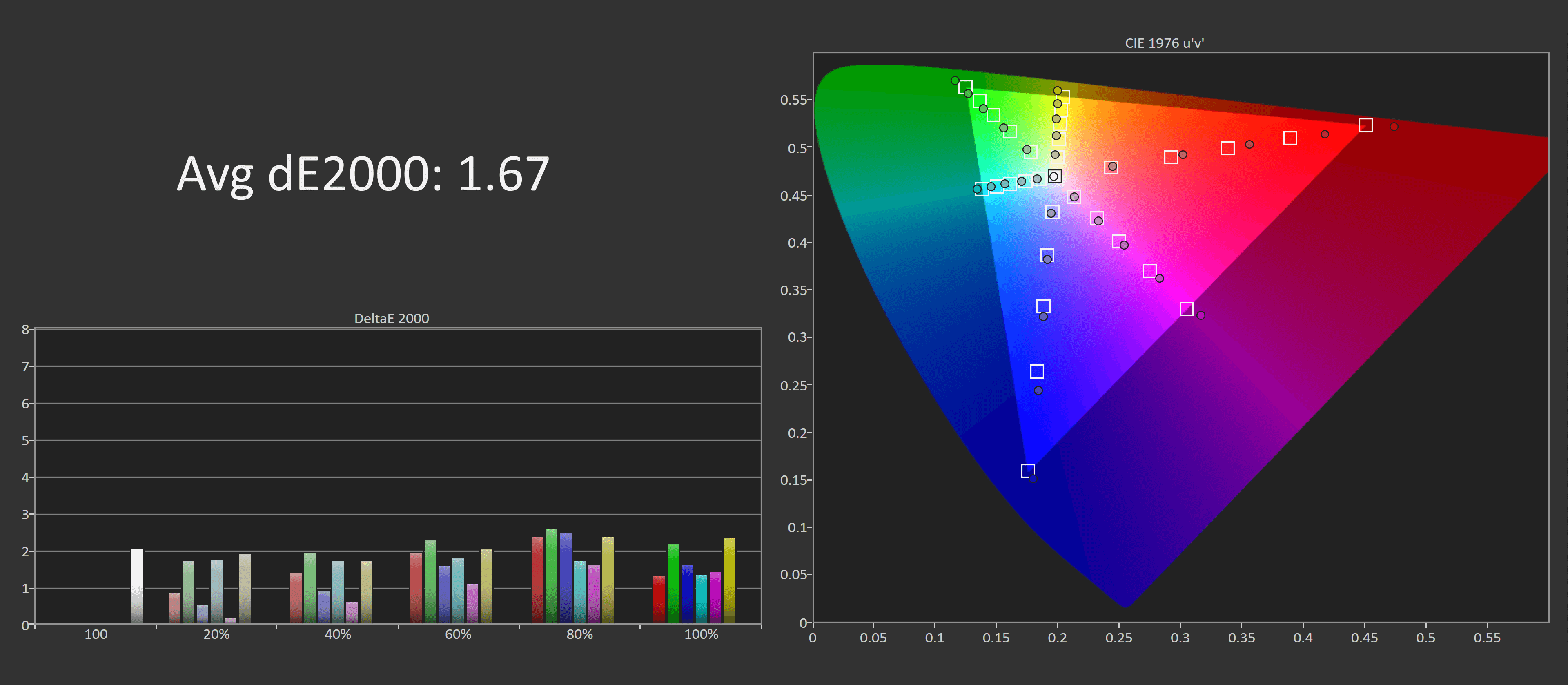
Considering most gaming-grade monitors ship with very little calibration to speak of, we're pleased to see near-accurate results from the ViewSonic XG350R-C out of the box. With a few small tweaks and changes to the color controls in the on-screen display I was able to tighten things up further, with sub-2.0 deltaE averages across the board, a very strong showing here.
And of course we can go one step further with a full calibration, the results of which you can see below:
OSD calibration results ( 1 - 2 - 3 ) | Fully calibrated results ( 1 - 2 - 3 )
While this monitor delivers strong color results, excellent response times and good input lag, there is one aspect that really lets it down: panel coating. This is something we usually don't discuss because it's a non-issue, but with the XG350R-C we immediately spotted something strange about the way it displays text.
It's a subtle effect, but this monitor seems to have a bit of 'smudginess' to it. Text lacks the sharpness and clarity of other 3440 x 1440 monitors we've reviewed recently, and when viewing the display through a magnifying glass I put this down to something strange about the coating that's diffusing the light slightly, creating the smudge issue.
The subtle lack of sharpness is almost like the monitor is running at a subnative resolution, except it's working as intended. It's a weird one because the screen coating isn't something we would have issues with. But on this problem alone we'd find it hard to recommend this monitor when similar options exist that give greater clarity.
Moving on to uniformity, again these are good results for an ultrawide. We're getting typical falloff along the outer edges but the central zone is reasonably accurate, definitely more so than some curved ultrawides we've tested.
Wrap Up
With all the testing done, the data in and the comparisons made, we think the ViewSonic XG350R-C is one of the rare monitors that we can't recommend. We found four key problems: The smudgy screen coating is a rare issue but a total dealbreaker that reduces the clarity of an otherwise decent high resolution panel. The design is bulky and not very appealing. The on-screen menu is flawed in its navigation and color scheme which makes it difficult to use. And the contrast ratio is lower than equivalent monitors that opt for Samsung's VA panel over AU Optronics'.
There are several positives here, too. Response time and input lag performance is great. Not outstandingly better than equivalent monitors, but still very good. Out of the box color performance is better than we expected and better than average. And it does come with features like a height adjustable stand, backlight strobing modes, and RGB lighting.
But unfortunately, those cons are compounded by a price tag that's not competitive. At $700, a 3440 x 1440 ultrawide needs to be offering a higher refresh rate than 100 Hz to justify its price tag. For just $100 extra you can grab the Acer Predator X34P or LG 34GK950G, both of which are all round better monitors with a 120 Hz refresh rate and G-Sync.
Then more affordable monitors such as the $450 Viotek GN34C or MSI MAG341CQ don't offer features like a height adjustable stand or backlight strobing, but there is no way those features are worth spending an extra $250 on. To make matters worse, these cheaper options deliver better picture quality. Response time and input lag results are similar, but the contrast from Samsung's cheaper VA panel is higher, and you don't get the weird coating issue that this ViewSonic monitor has.
Bottom line, the ViewSonic XG350R-C is a hard pass with too many flaws for our liking and better options to be had. Viewsonic produces one of our favorite productivity monitors (check out the ViewSonic ColorPro 32" VP3268-4K), and the data shows good color reproduction and specs for gamers on this curved XG350R-C, but they will have to tweak the formula further before they can compete with the top gaming contenders.
Shopping Shortcuts:
- ViewSonic XG350R-C 35" (1440p 100 Hz) on Amazon
- MSI Optix MAG341CQ (1440p 100 Hz) on Amazon
- LG 32GK650F 32" (1440p 144Hz) on Amazon, Newegg
- Acer Nitro XV273K 27" (4k 120Hz) on Amazon, Newegg
- Asus MG279Q 27" (1440p 144Hz) on Amazon
- GeForce GTX 1660 Ti on Amazon, Newegg
- GeForce RTX 2080 on Amazon, Newegg
- Radeon RX 580 on Amazon, Newegg
